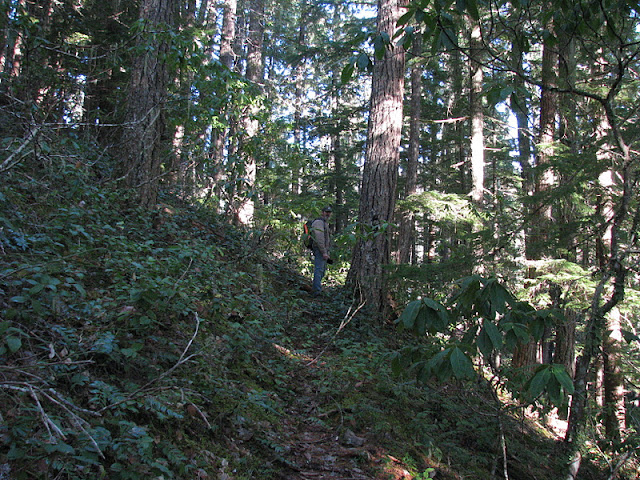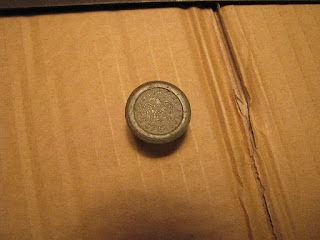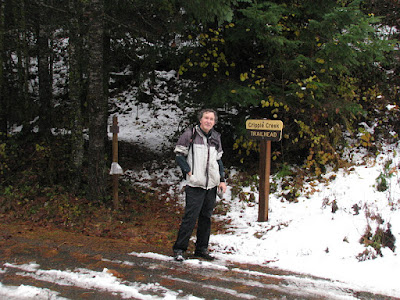Pacific Crest Trail sign in Oregon
(not actual sign)
(not actual sign)
The route was changed frequently over the years, eventually to be supplanted by the Pacific Crest Trail, although they lived side by side for many years. Earlier incarnations tended to hug the dry side of the Mt. Hood National Forest. Later, due to "multiple use" pressures, the trail was routed further west, along Rho Ridge and beyond. In the 1960s as road building and logging increased, most of this route was abandoned as well, leaving the fragmented remains to rot on the hills and revert back to nature.
An excellent (although short) writeup can be found on Trailadvocates. Thanks Donovan H., Maharaj of Lost Knowledge
History of the route beyond maps is hard to come by. I'd appreciate any stories anyone has about their experiences along the Oregon Skyline, but especially in the area surrounding the Clackamas.
Close to the Winter Solstice, the days are very short up here in the Pacific Northwest, with complete darkness by 4:30 P.M. But the freezing temps and buckets of cold rain more than make up for it.
"BE AT MY HOUSE NO LATER THAN SEVEN!!!!" Don screamed at me through the telephone. Well I hung up on that bastard in a clatter, and be damned if I wasn't at his fogged doorstep not a minute late?
It was foggy (damned foggy) as we passed the Original Certified End of the Oregon Trail (with gigantic circled "wagons" of steel and fortitude), but those Pioneer Ghosts were long gone as I bought Chai and a still warm Blueberry (yet mass produced) muffin from a roadside kiosk. I doubt those pioneers had roadside Chai.
Foggy and gray we leave Oregon City, but then like a magic light the sun burst over the Clackamas.
I have spent numerous times trying to find this small fragment of the Skyline Trail. Unfortunately for me, the lower section is a tangled mess and heavily impacted by cutting. It is also a very dense, almost tropically lush forest with thick vegetation. Stationary thing just don't last that long.
But this time we were lucky. After squeezing through a sea of very dense alders and young firs, we were able to pick up a section of the old trail. Oh man our troubles were over.
It was very easy to follow. For about 1/8 of a mile.
long time gone
And then we lose it in the clearcuts, popping out onto this road.
Powerlines hum in the distance along their own clearcut strip.
The air was strangely calm.
No longer pertinent. Alas, abandoned too.
Well, after cris-crossing these old logging roads and my feet getting sore in new boots, we decide "the hell" with that horrible maze of recovering clearcuts, let's go back down through that strip of old growth forest.
Hey! Howya doin? We find blazes in the brush.
Alas, sooner or later back into a clearcut.
Fragments. Dots on a map. A forest is an incredibly dynamic place. Maddening!
Don posing for wife
into oblivion, again
And that's what you get at the end of December.
Down the Clackamas into Oregon City, into the night on many old roads.






































































